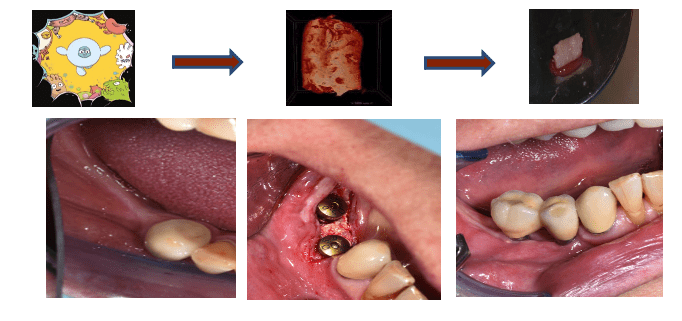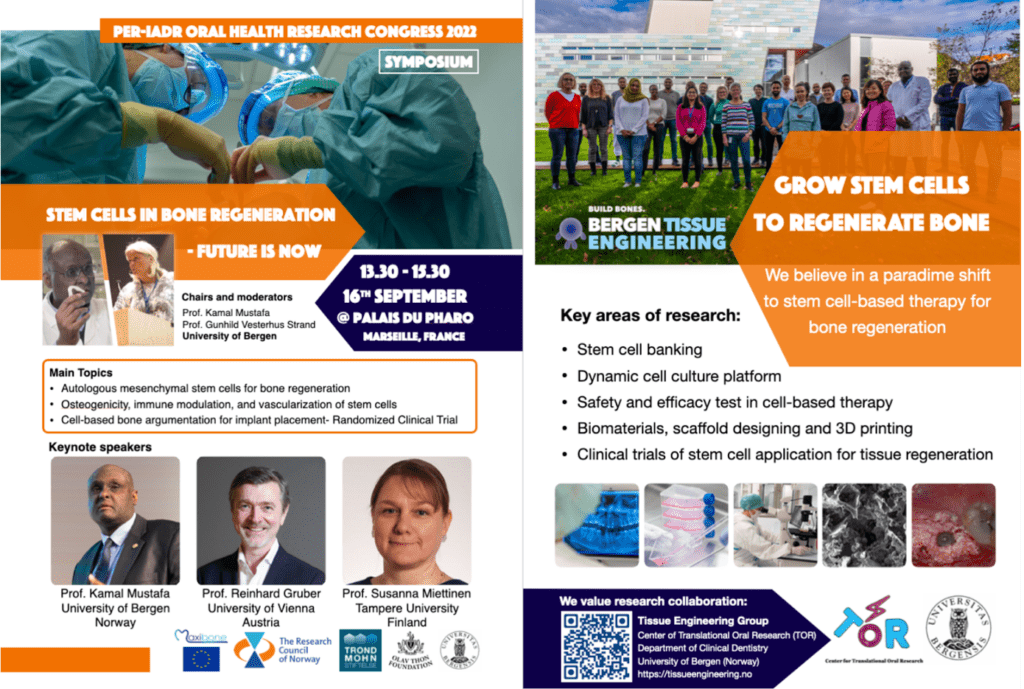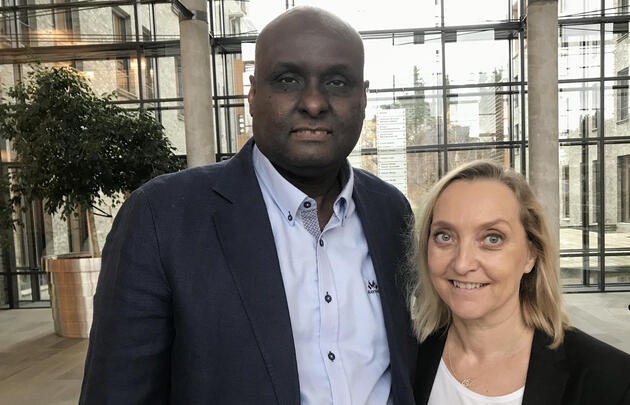Stem Cell Therapy
Bone transplantations are carried out more than 1 million times per year in Europe, and the new bone tissue is often grown from the patient’s own stem cells. But there are areas of the body where stem cell treatment has not yet been successful. The jawbone at the very back of the mouth is such an area, as the mouth moves a lot, there is poor blood flow in the jawbone and the mouth is full of bacteria.
If you lose teeth in adulthood due to, for example, diseases or injuries, dental implants can replace your own teeth, but the implants need enough jawbone to remain completely fixed. For patients with too little bone tissue in the jaw, this can lead to social stigmatization due to missing teeth. Until now, bone tissue had to be transplanted from other places in the body, but the procedure is complicated and known to cause pain for the patients.
Associate professor and dentist Cecilie Gjerde from the Department of Clinical Dentistry at UiB has already managed to help eleven patients with jawbone reconstruction in a pilot trial: She and the research team used the body’s own stem cells and bicalcium phosphate as building material, so that the cells had something to grow on.
To further test the method in a larger clinical study, the Trond Mohn Foundation in collaboration with UiB has financed a 4-year research project. Gjerde works together with Professor Kamal Mustafa from the same department, who is one of Europe’s leading experts in bone tissue reconstruction.
The researchers have worked in many different European research consortia and can draw on this collaboration, which will benefit patients in Norway.
The research group
Research production and innovation activity
The Tissue Engineering Group at IKO under the leadership of Professor Kamal Mustafa and Associate Professor Cecilie Gjerde is producing innovative research in the field of regenerative medicine and translational research. The main focus of the research group is the development of translational approaches for regenerative therapies using mesenchymal stem cells (MSC). The group has contributed significantly to 4 large EU collaborative projects, initiated during the recent years (VascuBone, FP7 project no. 242175, REBORNE, FP7 project no. 241879, H2020 Maxibone, project no. 779322 and H2020 BonFix, project no. 952150).
The present project funded by Trond Mohn Foundation (TMS) and the clinical studies performed by the group, propose innovative alternatives to conventional treatment modalities by using the concept of tissue engineering in which bicalcium phosphate granules produced by Biomatlante®, France are used as scaffolds to deliver MSC. Our data showed that stem cells combined with calcium phosphate scaffolds induce the formation of new bone. Interestingly, the data clearly demonstrated formation of the new bone with good quality and quantity enabling us to install dental implants produced by Dentsply, Sweden (Fig.1). Furthermore, osteogenic differentiation of mesenchymal stem cells can be induced solely by mechanical stimulation in a closed bioreactor system, which was mediated by enhanced cellular contractility under medium flow.

The Trond Mohn Foundation would like to congratulate the Tissue Engineering Research Group at UiB on the recent awards and funding.
- UiB Ide 2023 Awarded to Shuntaro Yamada (450 000 NOK)
- Bergen tannlegeforening, BTFs hederstegn, Awarded to Cecilie Gjerde in 2022
- NOF Hatton Award – Nordisk Odontologisk Förening, Marseille, France, September 2022 awarded to Shuntaro Yamada.
- Meltzer project funding (103637) – L. Meltzers Høyskolefond, Bergen, Norway, April 2022, awarded to Shuntaro Yamada.
- IADR Osteology Foundation New Investigator Award 2022, IADR, USA (75,000 USD), Siddharth Vivek Shanbhag.
- Osteology Advanced Research Grant 2022, Osteology Foundation, Switzerland (25,000 CHF), Siddharth Vivek Shanbhag .
- ITI Research Grant 2022, ITI Foundation, Switzerland (25,000 CHF), Siddharth Vivek Shanbhag.
- Trond Mohn grant for The Centre of Regenerative Medicine, project titled “Clinical Treatment of Osteonecrosis with Bone Mesenchymal Stem Cells – OsteoStemˮ.
- The Olav Thon Award of Nordic Research in Medicine. https://olavthonstiftelsen.no/forskningsstotte/arets-vinnere-av-olav-thon-stiftelsen-2020/.
- The European EU H2020 project: BoneFix: A Paradigm Shift in Fracture Fixations via On-Site Fabrication of Bone Restoration Patches. – Tissue Engineering Group.
- The 3DPRENT project financed by Research Council of Norway (RCN). 3D-printed scaffolds for Bone Regeneration – Tissue Engineering Group.
- – Årets ph.d.-arbeid, Siddarth Shanbhag (Tissue Engineering Group, Dept. of Clinical Dentistry) Prisvinnere Fakultetets dag 2021 | Det medisinske fakultet | UiB
- The Award – Research Group of the Year 2019 at The Faculty of Medicine. Årets forskningsgruppe | Institutt for klinisk odontologi | UiB.
The industrial partners Biomatlante®, France and Dentsply, Sweden provided and donated the bone substitute materials (BCP granules) and the dental implants respectively.

Funding period
2018-2023
Reconstruction of mandibular bone using stem cells and biomedical engineering approaches
TMS funding 8 MNOK
Total budget 16.7 MNOK

Cecilie Gjerde og Kamal Mustafa, UiB Foto Kim E. Andreassen
